Want to make climbing skins work for you, not against you? Here's the deal: attaching and removing skins the right way can save you time, energy, and cash. Done wrong, you'll face slips, wasted effort, and even dangerous situations on steep terrain. Whether you're using Snowfeet* short skis or something similar, mastering this skill is a must.
Key Takeaways:
- Why it matters: Proper skin handling improves grip, saves energy, and extends skin life (they can cost $150–$300, so it’s worth it).
- Tools you’ll need: Microfiber cloth, skin wax, waterproofing spray, and a storage bag.
- Attaching skins: Start at the tip, align down the ski center, and secure the tail clip.
- Removing skins: Unclip the tail, peel from tail to tip, and fold glue-to-glue to protect the adhesive.
- Maintenance tips: Clean skins, apply wax to prevent snow clumps, and store them in a dry place.
Snowfeet* short skis make this process easier thanks to their compact size. So, whether you're on 65 cm Skiblades or 120 cm touring models, you'll spend less time fiddling with gear and more time enjoying the slopes. Let’s dive into the details!
How To Use Climbing Skins When Ski Touring in the Backcountry
Tools and Preparation You Need
Getting your skins ready and attaching them doesn’t require much, but having the right tools on hand can make the process a whole lot easier - especially when you’re out in the cold.
What You’ll Need
To attach climbing skins, you’ll need just a few essentials:
- A microfiber cleaning cloth: This is a must for wiping away dirt, ice, and moisture from your ski base without causing scratches. Clean skis mean better adhesion.
- A skin trimming tool or a sharp utility knife: While Snowfeet* models are designed with standardized shorter lengths that rarely need trimming, it’s good to have this handy just in case.
- A storage bag: This keeps your skins neat and protected when they’re not in use. Snowfeet* skins fold up small, making them easy to stash in a daypack - perfect for switching between skinning and skiing during a backcountry trip.
- Skin wax: Helps maintain the adhesive’s stickiness, even when temperatures fluctuate.
- Waterproofing spray: Keeps the fabric in good shape by protecting it from moisture.
- Ski straps: Useful for securing your skis when you’re taking a break.
- Duct tape: Your go-to for quick fixes if the adhesive or fabric starts to fail.
With these tools, you’re all set to prep your Snowfeet* skis for a successful day on the slopes.
Prepping Your Snowfeet* Skis

Start by giving your Snowfeet* ski base a thorough cleaning. This step is key to ensuring the skins stick properly. Remove any snow, ice, or debris, especially around the tips and tails where the skins attach. A clean surface means better adhesion and fewer headaches later.
Before you head out, do a quick test: peel back a corner of the skin and press it lightly onto the ski. The adhesive should feel just tacky enough to stick but shouldn’t leave any residue behind. If your skins have been sitting in the cold, let them warm up a bit before testing or applying them.
Make sure your skins are compatible with your Snowfeet* model. Their compact design usually means less hassle compared to full-length skis, but a quick check ensures everything fits snugly.
Thanks to the smaller size of Snowfeet* skins, they’re quicker to prep and easier to handle than traditional long ski models. Once you’ve done this a few times, the process becomes second nature, making your backcountry adventures smoother and more enjoyable.
How to Attach Climbing Skins
Getting your Snowfeet* skis ready for the backcountry? Attaching climbing skins is easier than you might think, thanks to the compact design of Snowfeet* short skis. Their size makes the process quicker and more straightforward, so you can hit the trails in no time. Here’s a step-by-step guide to ensure a secure fit.
Attaching Skins to Snowfeet* Skiblades and WALKSKI Models

Attaching skins to Snowfeet* short skis is a simple process. Just follow these steps:
- Start by standing the ski vertically with the tip pointing up, and hook the tip bail or hooks onto the ski tip. This creates a solid anchor point.
- Brace the ski tail against your foot or hip. The shorter length of Snowfeet* skis gives you better control during this step.
- Press the glue side of the skin onto the underfoot area. This acts as your reference point for alignment.
- Align the skin down the center of the ski base, making sure both metal edges stay exposed. Keeping the edges uncovered ensures better grip on icy or hard-packed snow while avoiding glue buildup from snow.
- Smooth the skin firmly from tip to tail to ensure it sticks properly.
- Secure the tail clip with enough tension to hold the skin in place.
Snowfeet*-Approved Attachment Tips
Want to keep your setup performing at its best? Here are a couple of extra tips:
- Always fold your skins glue-to-glue when storing them. This prevents dirt and air from compromising the adhesive.
- While applying the skin, center it under tension to maintain its position during your trek. This small step can make a big difference in performance.
How to Remove and Store Climbing Skins
Taking off your climbing skins the right way is just as important as putting them on. Thanks to the compact size of Snowfeet* skis, the process is easier, but using the correct technique is still key.
Removing Skins Without Damage
To remove skins without causing harm, follow a systematic approach that protects the adhesive. Start by unclipping the tail attachment to release the tension. Then, peel the skin from the tail to the tip in one smooth motion. This helps avoid stretching or tearing the adhesive.
Snowfeet* skis make this process more manageable due to their shorter length. For instance, the Snowfeet* Mini Ski Skates are just about 15 inches (38 cm), and even the 120 cm Skiblades (around 47 inches) are far easier to handle than traditional skis, which can range from 67 to 75 inches long. With Snowfeet*, you can easily control the removal process with your hands - no awkward stretching required.
Keep the adhesive clean and free from dirt, dust, pine needles, or other debris, as these can contaminate the glue and lead to early failure. Also, don’t let snow or ice build up on the adhesive, as moisture can make it lose its stickiness.
If it’s windy, act quickly and shield the adhesive side from exposure. Strong winds can cause skins to flap around, pick up debris, or even get damaged during removal. Once you've removed the skins, proper storage is the next step to keep them in good condition.
Storing Skins Properly
Storing your skins the right way can make a big difference in their lifespan. After removal, fold the skins glue-to-glue immediately to protect the adhesive and keep it ready for your next adventure.
This is where the compact design of Snowfeet* products really shines. Unlike traditional ski skins for 75-inch skis, which can form long, bulky bundles, Snowfeet* skins fold into small, neat packages. The Mini Ski Skates’ skins, for example, are so compact they can even fit in a jacket pocket.
When folding glue-to-glue, handle them gently - don’t yank or pull too hard. Unfold them carefully, especially if you’re not using protective sheets. Store the folded skins in a dry place, away from extreme heat or cold, as both moisture and temperature extremes can degrade the adhesive over time.
For added protection and organization, consider using dedicated skin storage bags. Thanks to Snowfeet*’s compact design, you can carry multiple pairs of skins without the bulk that comes with traditional ski gear.
Lastly, make sure your ski bases are clean and dry before reapplying the skins. Any leftover residue or moisture from previous use can interfere with the adhesive and reduce how well they stick during your next outing.
sbb-itb-17ade95
Maintenance and Care Tips
Taking care of your gear is just as important as using it correctly. When it comes to Snowfeet* products, following a good maintenance routine will help your skins perform well and last longer. Their compact design makes upkeep easier than with traditional ski gear, but a little attention goes a long way in ensuring they’re ready for your next adventure.
Regular Skin Maintenance
To keep your skins in great shape, clean them every few uses. Use lukewarm water and mild soap to wash away dirt, then let them air dry completely before putting them away. Steer clear of hot water or harsh chemicals - they can damage the adhesive and materials.
Take a moment to inspect your skins regularly. Look for frayed edges, worn adhesive, or any issues with the attachments. If you spot fraying, trim the loose threads carefully with sharp scissors. Adhesive not sticking well? Dirt, moisture, or UV exposure might be the culprit. Use a specialized skin cleaner or isopropyl alcohol to clean it, and let it dry thoroughly before using again.
Waxing is key to keeping your skins performing at their best. Snowfeet* offers a Liquid Wax (Universal +5°C / -20°C | 41°F / -4°F, 75ml) for $29, which is perfect for preventing snow clumps and ice buildup. It also helps improve both glide and grip, making your backcountry experience smoother.
"Keep some skin wax handy, too, to prevent freezing or ice/snow buildup." - REI Expert Advice
"Regular waxing improves glide and counteracts snow clumping and buildup." - DYNAFIT
Apply wax whenever you notice snow sticking to your skins or when temperatures hover near freezing. Because Snowfeet* skins are smaller than traditional ski skins, you’ll use less wax per application, so your bottle will last longer - an added bonus!
Snowfeet* Accessories for Skin Care
Snowfeet* offers a range of accessories to make maintenance even easier and more effective. Their Liquid Wax is specially designed for the temperature ranges you’ll encounter with short skis, providing excellent protection against ice and snow buildup.
Replacement Straps, starting at $12, are another must-have. These straps are simple to install and much more affordable than traditional ski bindings. Check them regularly for signs of wear, stretching, or damage to attachment points. Replacing them early ensures your gear stays secure and functional.
It’s also a good idea to keep a small maintenance kit with your gear. Include essentials like wax, replacement straps, and basic cleaning supplies. Thanks to the compact size of Snowfeet* products, your entire kit can fit in a small bag - no need for bulky tools like those required for traditional ski maintenance.
Store your wax in a cool, dry spot, and swap out straps before they show serious wear. Snowfeet*’s affordable accessories make it easy to keep backup parts on hand, saving you from the hassle and cost of pricey repairs common with traditional ski setups.
With regular care and Snowfeet*-approved products, your climbing skins will stay reliable season after season. Plus, their simple design means you can handle most maintenance tasks on your own - no expensive trips to the ski shop needed.
Snowfeet* vs. Traditional Ski and Snowboard Brands
Let’s dive into how Snowfeet* stacks up against traditional ski and snowboard setups. If you’ve ever wrestled with managing climbing skins on long skis, you’ll appreciate the simplicity Snowfeet* brings to the table.
Key Benefits of Snowfeet* Products
One of the standout features of Snowfeet* is how easy it is to attach skins. With Skiblades ranging from just 25.6 inches (65 cm) to 47.2 inches (120 cm), the compact size means quicker attachment and fewer alignment headaches. It’s a no-fuss solution that saves you time without sacrificing functionality.
Portability is another big win. The entire Snowfeet* setup, including the skins, fits neatly into a standard backpack. Compare that to traditional ski touring gear, which often requires bulky, specialized bags and extra planning - especially if you’re flying. Snowfeet* keeps things simple and travel-friendly.
And here’s a game-changer: universal boot compatibility. Instead of shelling out for pricey, specialized ski boots, Snowfeet* works with any winter boots you already own. This not only saves money but also makes the gear more accessible, especially for beginners.
Maintenance? It’s a breeze. Unlike traditional long skis that need professional tuning, frequent edge sharpening, and detailed waxing, Snowfeet* is designed for easy, DIY upkeep. You’ll save time, money, and the hassle of frequent trips to the shop.
Overall Comparison
Here’s why Snowfeet* stands out:
- Quick and hassle-free skin attachment thanks to its compact design
- Portability that lets you pack your entire setup in a regular backpack
- Universal boot compatibility, eliminating the need for expensive, specialized boots
- Beginner-friendly with a shorter learning curve for backcountry adventures
- Low-maintenance design that cuts down on costly professional services
If you’re looking for a simpler, more efficient way to enjoy backcountry skiing, Snowfeet* delivers on all fronts. It’s all about making your adventure easier, lighter, and more accessible.
Conclusion: Master Climbing Skin Attachment and Removal
Now you’ve got all the know-how you need to handle climbing skins like a pro. The essentials are simple: prep your gear, treat it gently, and stay on top of maintenance. Do that, and your skins will keep delivering for years.
Snowfeet* gear makes this process even easier. Thanks to its compact design, attaching skins is much simpler compared to traditional long skis. Less fiddling around means more time carving through the backcountry.
Here’s the drill: clean your ski base, attach the skins from tip to tail without forcing them, and when it’s time to remove them, peel slowly from the tail forward. This steady approach protects both your skins and your ski base. Store them with the protective sheets, and they’ll be ready for your next adventure.
What’s great about Snowfeet* is how user-friendly it is. With universal boot compatibility and a low-maintenance design, you can focus on perfecting your technique rather than battling complicated gear. Whether you’re rocking the 65 cm Skiblades for quick park sessions or the 120 cm models for extended tours, the same principles apply.
Get outside and practice. The more you do, the smoother it gets - while others are still fumbling with their gear, you’ll be gliding effortlessly. That’s the Snowfeet* difference: straightforward gear that lets you concentrate on the fun part - skiing. Stick to these tips, and you’ll see how easy and enjoyable Snowfeet* can make your adventures.
FAQs
What mistakes should I avoid when attaching or removing climbing skins?
To keep your climbing skins in top shape and ready for action, steer clear of these common pitfalls:
- Skipping a clean ski base: Always ensure your ski base is clear of dirt, snow, or debris before attaching your skins. A clean surface means better grip and performance.
- Letting the sticky side touch snow or dirt: Once the adhesive side gets dirty, it’s tough to get it working properly again. Avoid contact with the ground or snow at all costs.
- Leaving the adhesive exposed to air too long: Prolonged exposure can dry out the glue, making it less sticky over time. Cover it up when not in use.
- Peeling off skins in windy conditions: Wind can whip your skins around, making them harder to handle and risking damage. Find a sheltered spot for removal.
Stick to these tips, and your Snowfeet* climbing skins will stay reliable and ready for your next big climb!
How are Snowfeet* short skis better than traditional skis for attaching and maintaining climbing skins?
Snowfeet* short skis take the hassle out of attaching and managing climbing skins. Thanks to their compact size and lightweight build, there's less surface area to deal with, making the process faster and easier - especially if you're just starting out.
What’s more, Snowfeet* products are designed with features that keep climbing skins securely in place. This snug fit helps prevent peeling or slipping while you're on the move. Unlike traditional skis, which can feel bulky and require more effort to handle, Snowfeet* short skis offer a simpler, more user-friendly experience - all without compromising on performance.
What can I do if my climbing skins lose their stickiness while I’m out on the slopes?
If your climbing skins start losing their stickiness mid-trip, don’t panic - you can bring them back to life with a simple trick. Grab a waxing iron, set it to medium heat, and place the skin glue-side up on a clean, flat surface. Gently press the iron onto the adhesive, warming it evenly across the surface. Once you're done, let the skins cool completely before folding them glue-side to glue-side for storage. This helps the adhesive reset properly.
Need a quick fix while you're out in the backcountry? A small dab of skin wax or a Snowfeet-approved skin adhesive can temporarily restore grip. These handy solutions can keep your skins working smoothly and save your trip from turning into a slippery mess.







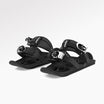
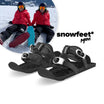
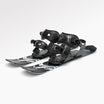
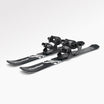

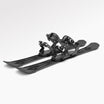

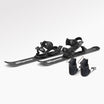













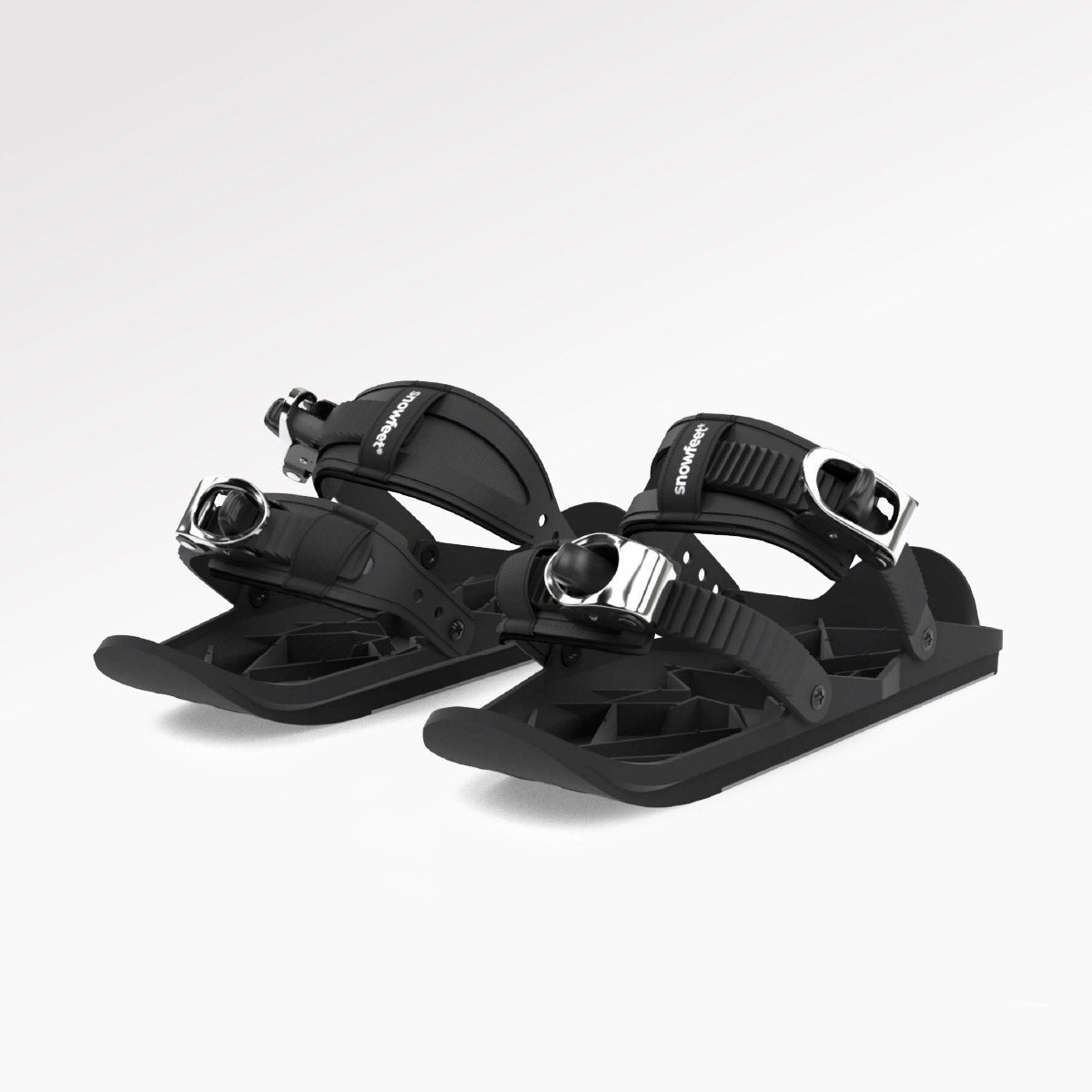
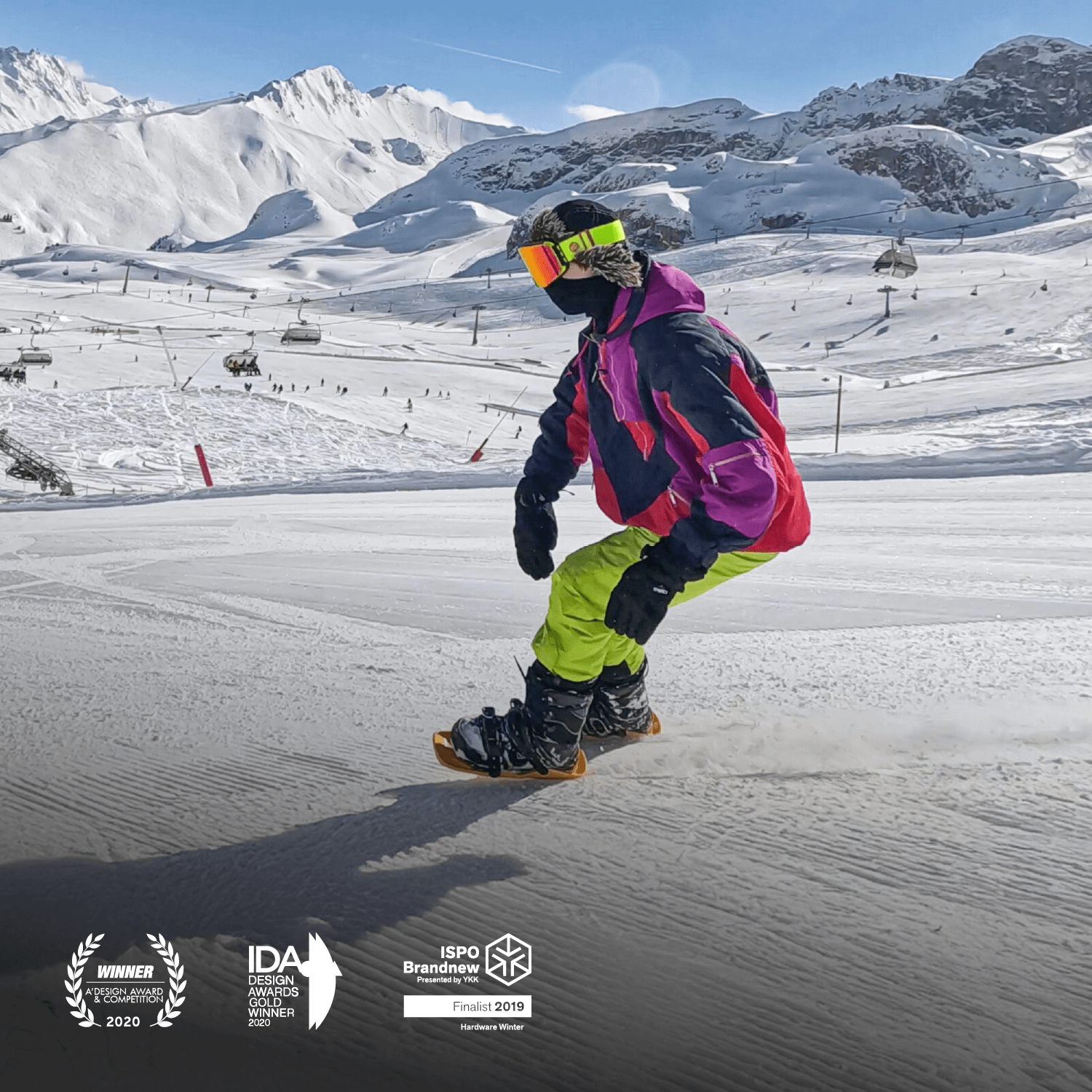
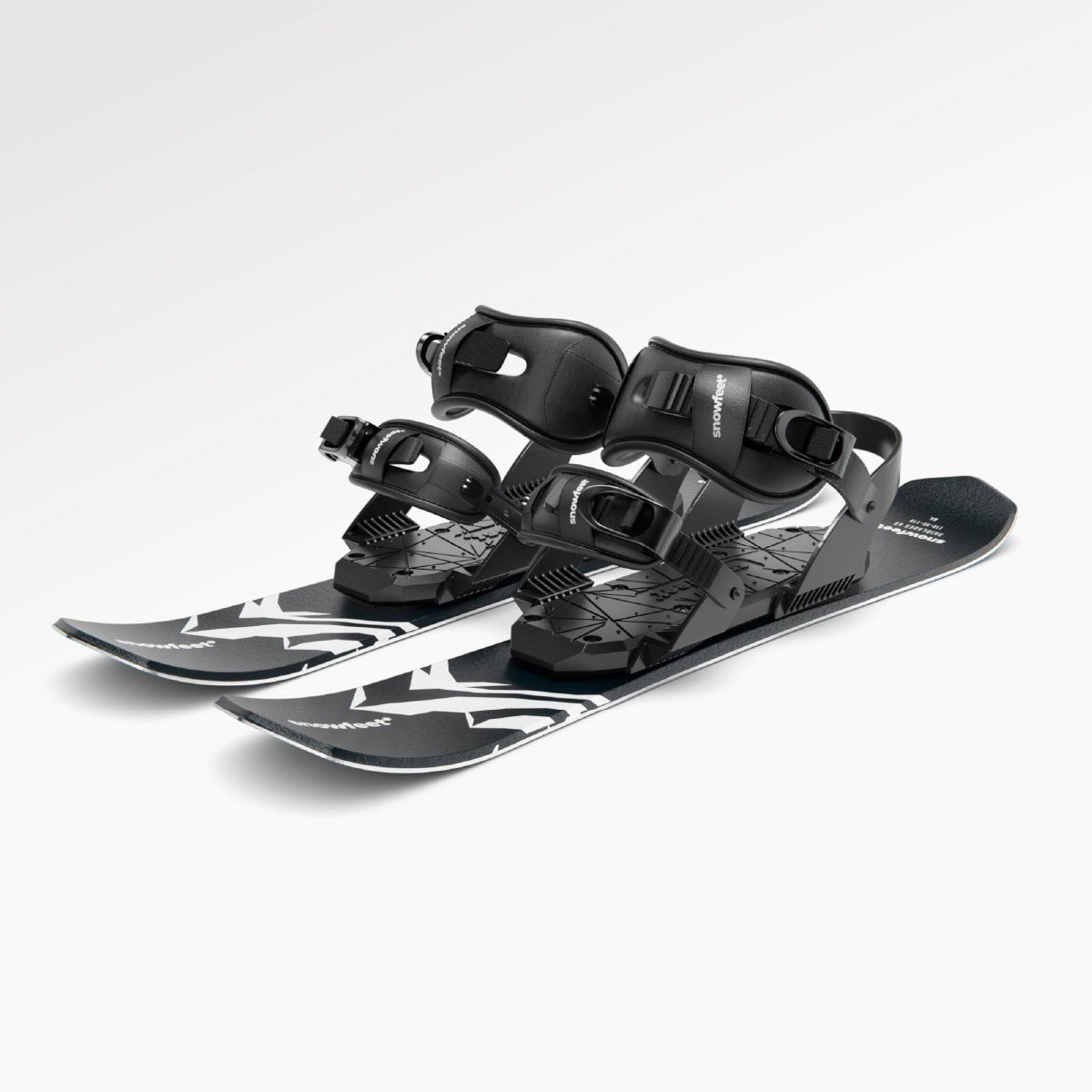

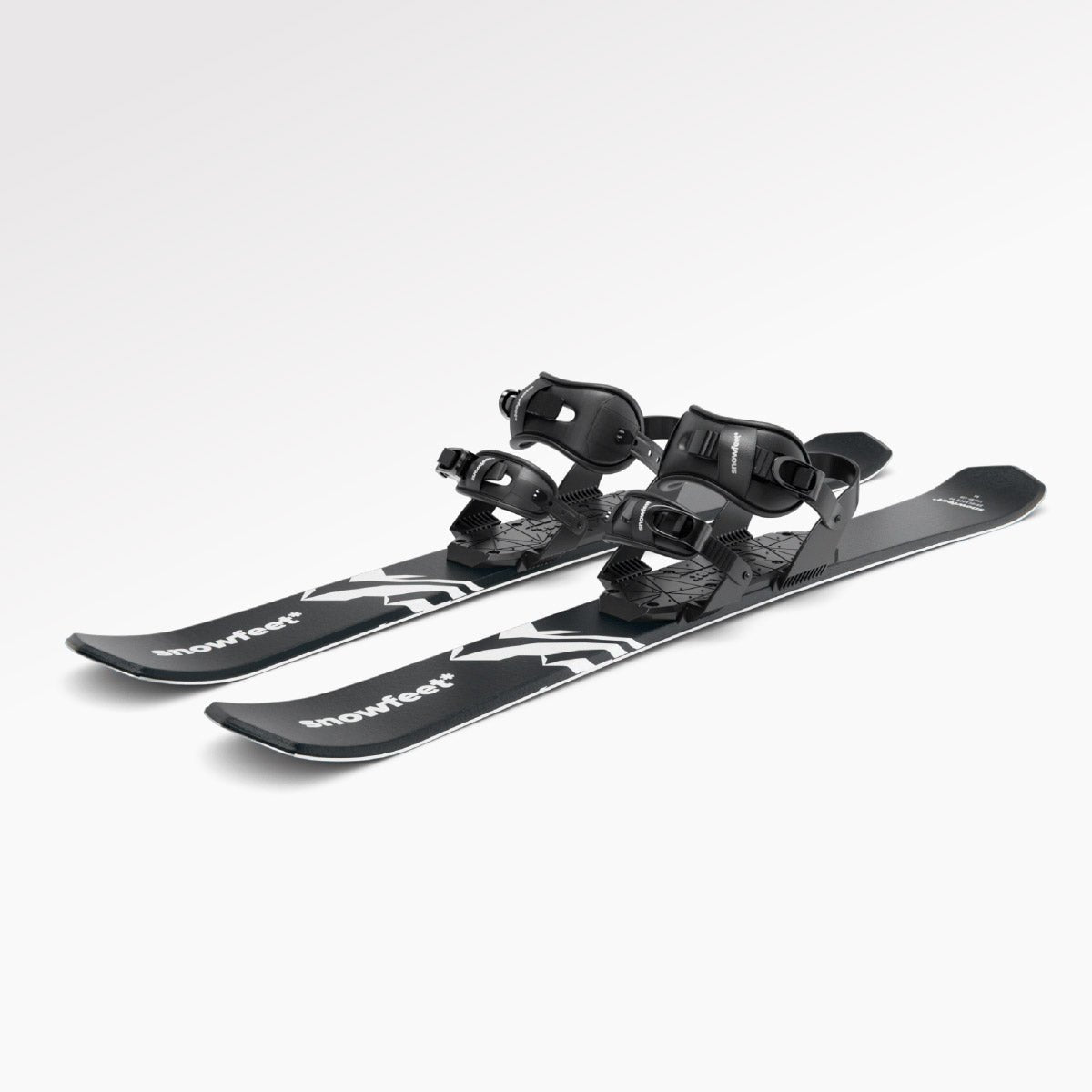

Efterlad en kommentar
Denne side er beskyttet af hCaptcha, og hCaptchas Politik om beskyttelse af persondata og Servicevilkår er gældende.